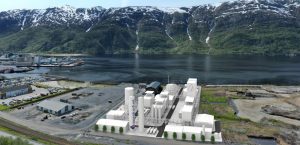The design study, unveiled by Tractebel Overdick GmbH’s offshore experts, outlines an innovative solution for large-scale hydrogen storage on the high seas: a scalable offshore platform for the compression and storage of up to 1.2 million m3 of hydrogen. Underground salt caverns will be used as storage and buffer for the hydrogen produced offshore, before the gas is transported via the pipeline network to the onshore grid and finally to consumers and customers.
Expanding is possible
This offshore platform complex consists of a wellhead platform for the operation of the caverns and a series of compression platforms that enable a staged increase in capacity. If required, the plant can also be expanded in the future by additional modules. The study assumes a capacity equivalent to converting 2 GW of green offshore wind power into hydrogen. Extensions and individual adaptations are possible at any time.
Storage hubs
Offshore compression and storage hubs such as these can further increase the flexibility of upcoming offshore hydrogen production. As the compression effort decreases at the wind farms’ electrolysis plants, so too shall the cost for offshore hydrogen production sites in general. “Centralised offshore hydrogen hubs also facilitate the integration of smaller-scale hydrogen production, which is to be expected within the scope of capacity expansions while re-powering offshore wind farms in the future. At the same time, they offer an economically viable option, as the export and compression of hydrogen produced offshore can be bundled. This significantly reduces the overall costs for future projects,” said Klaas Oltmann, Director of Business Development at Tractebel Overdick GmbH.
The newly designed storage and compressor platforms process 400,000 Nm3/h of hydrogen, which is stored in underground salt caverns at a pressure of up to 180 bar. These storage facilities buffer production peaks, optimise flow rates and therefore enable a more economical design of the export pipeline. An important contribution to the sustainability of large underground hydrogen storage facilities is that existing offshore infrastructures can directly use green hydrogen instead of other energy sources for their operations. This contributes to the decarbonization of the entire offshore industry.
Partners
In addition to Tractebel’s renewable-energy and offshore experts, the engineering teams of DEEP.KBB GmbH and PSE Engineering GmbH were also involved as important components in the design study. This forward-looking alliance of experts facilitated the concept’s complete development, from geology to processing equipment. This bundled know-how is the foundation for further optimizations of the offshore hydrogen hub and future hydrogen projects.






